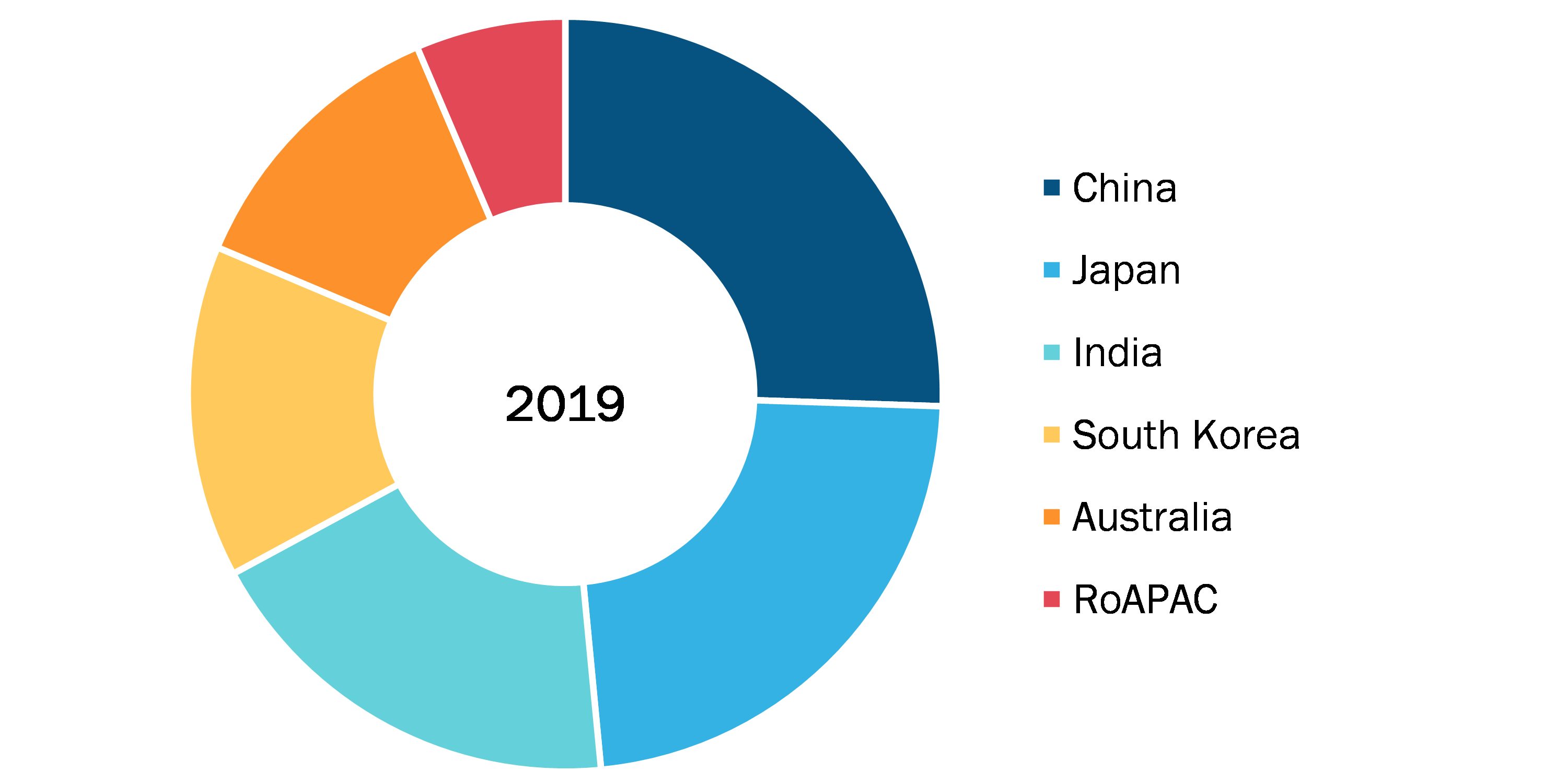The Asia Pacific ultrasound transducer market is expected to reach US$ 1,058.38 Million in 2027 from US$ 776.12 Million in 2019. The market is estimated to grow with a CAGR of 4.1% from 2020-2027.
The growth of the market is driven by the factors such as, growing medical device industry in Asia Pacific and increasing aging population in the Asia Pacific region are expected to augment the growth of the market. However, shortage of healthcare workforce in Asia Pacific is likely to have negative impact on the growth of the Asia Pacific Ultrasound Transducer market in the coming years.
The medical device industry in Asia Pacific region is growing due to growing healthcare needs of large population in Asia, supportive government policies, and advancements in technologies. As per the China National Bureau of Statistics, the medical device industry in China is one of the fastest growing sector and has double-digit growth for over a decade. In 2018, the medical device industry in China reached USD 78.81 billion, an increase of 22% from 2017. Over 70% of this growth is due to increase in hospital procurement.
Similarly, the medical device industry in India consists of international manufacturers and small and medium enterprises (SMEs). The Indian medical device market is estimated to reach US $50 bn by 2025. In the year 2018, India exported medical devices worth $2.1 bn and the number is expected to reach around US$10 bn by 2025.
Additionally, Japan's medical devices and materials market is among the world's largest medical device industry. As per the Ministry of Health, Labour and Welfare (MHLW) Annual Pharmaceutical Production Statistics, the medical devices and materials market in 2018 was approximately US $29.3 billion.
Thus, growing medical device industry in Asia pacific is likely to favor the growth of ultrasound transducer market during the forecast period.
Furthermore, Asia Pacific countries are expecting to witness huge challenge due to growing COVID-19. Due to outbreak of disease, healthcare industries has been affected badly, considering the economic conditions in current situation. Due to growing coronavirus cases, many seminars and international conference has been postponed. For instance, 9th Asia Pacific Breast Cancer Summit has been postponed after 13th to 15th march due to current growing coronavirus. After the first case in December in Wuhan, China, the COVID-19 virus, has spread to at least 180 countries and regions. In china the reported total cases of coronavirus is 83,022; in Japan it is 16,986; India is having 217,187 count. Restrictive measures have been taken to control the spread of this pandemic, however, in this measure Hospital, Clinics, Diagnostic Centers, Ambulatory Surgery Centers (ASCs) not taking any radiologic patient on priority. Apart from overall health system, ultrasound transducers has been facing challenges due to coronavirus outbreak.
Rest of Asia Pacific Ultrasound Transducer Market Revenue and Forecast to 2027 (US$ Mn)

- This FREE sample will include data analysis, ranging from market trends to estimates and forecasts.
Asia Pacific Ultrasound Transducer – Market Segmentation
By Product
- Linear
- Convex
- Phased Array
- Endocavitary
- CW Doppler
- TEE Probes
- Type
- 2D TEE Probes
- 3D TEE Probes
- 4D TEE Probes
- Age group
- Pediatric
- Adult
- Type
- Others
By Application
- Cardiovascular
- General Imaging
- Musculoskeletal
- OB and GYN
- Vascular
- Other
By End User
- Hospital
- Clinics
- Diagnostic Centers
- Ambulatory Surgery Centers (ASCs)
By Country
- China
- Japan
- India
- South Korea
- Australia
Company Profiles
- Shenzhen Mindray Bio-Medical Electronics Co., Ltd
- Fujifilm Corporation
- Hitachi, Ltd. (Hitachi Medical Systems Europe Holding AG)
- SIUI
- Samsung (Samsung Medison Co Ltd)
Asia Pacific Ultrasound Transducer Report Scope
| Report Attribute | Details |
|---|---|
| Market size in 2019 | US$ 776.12 Million |
| Market Size by 2027 | US$ 1,058.38 Million |
| Global CAGR (2020 - 2027) | 4.1% |
| Historical Data | 2017-2018 |
| Forecast period | 2020-2027 |
| Segments Covered |
By Product
|
| Regions and Countries Covered | Asia-Pacific
|
| Market leaders and key company profiles |
- Historical Analysis (2 Years), Base Year, Forecast (7 Years) with CAGR
- PEST and SWOT Analysis
- Market Size Value / Volume - Global, Regional, Country
- Industry and Competitive Landscape
- Excel Dataset


- Collagen Peptides Market
- Foot Orthotic Insoles Market
- Aircraft MRO Market
- Diaper Packaging Machine Market
- Small Internal Combustion Engine Market
- Advanced Planning and Scheduling Software Market
- Frozen Potato Market
- Energy Recovery Ventilator Market
- Parking Management Market
- Trade Promotion Management Software Market

Report Coverage
Revenue forecast, Company Analysis, Industry landscape, Growth factors, and Trends

Segment Covered
This text is related
to segments covered.

Regional Scope
North America, Europe, Asia Pacific, Middle East & Africa, South & Central America

Country Scope
This text is related
to country scope.
Trends and growth analysis reports related to Life Sciences : READ MORE..
- Siemens Healthineers AG
- Koninklijke Philips N.V.
- General Electric Company
- Samsung (Samsung Medison Co Ltd)
- Esaote SpA
 Get Free Sample For
Get Free Sample For